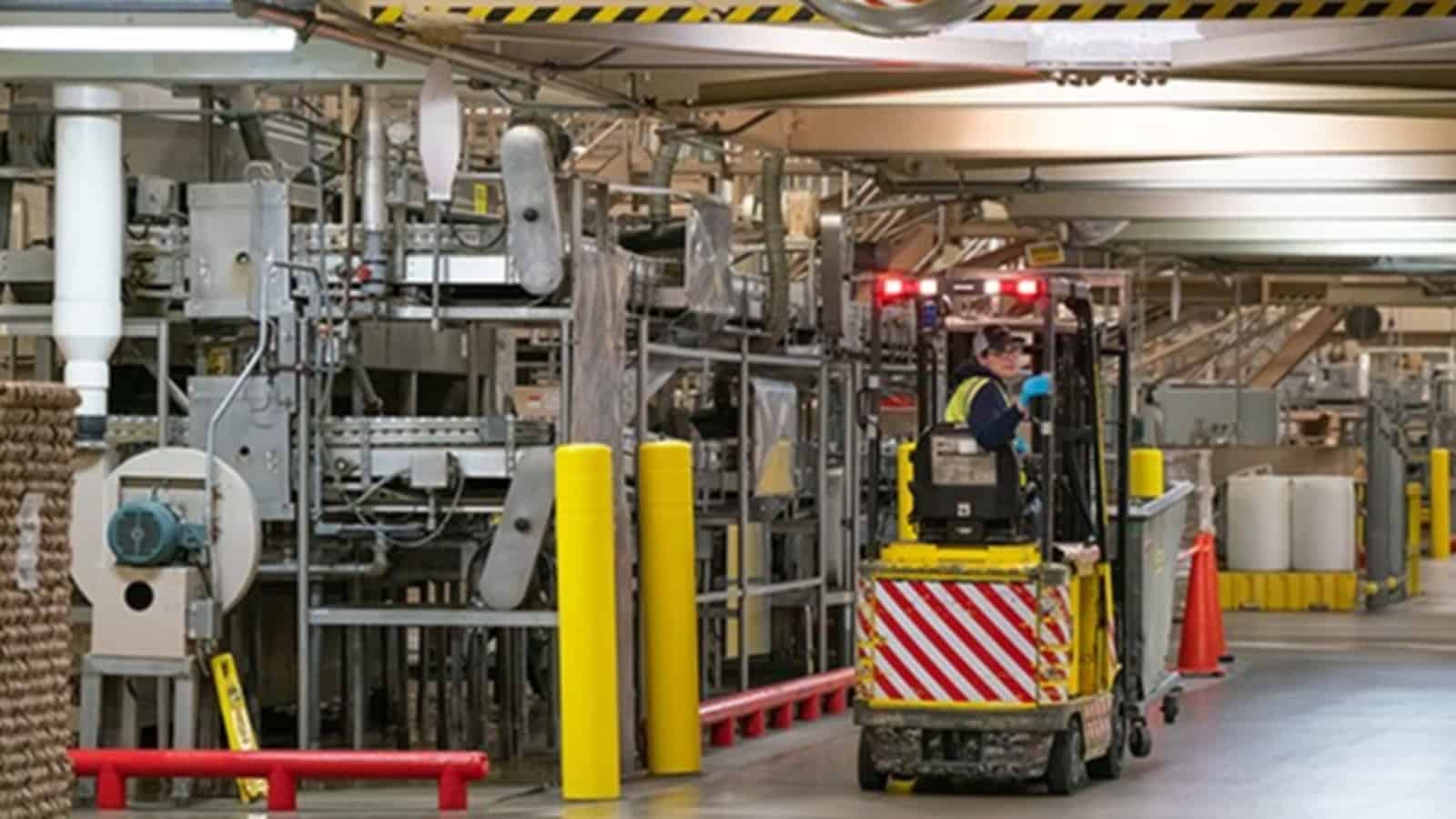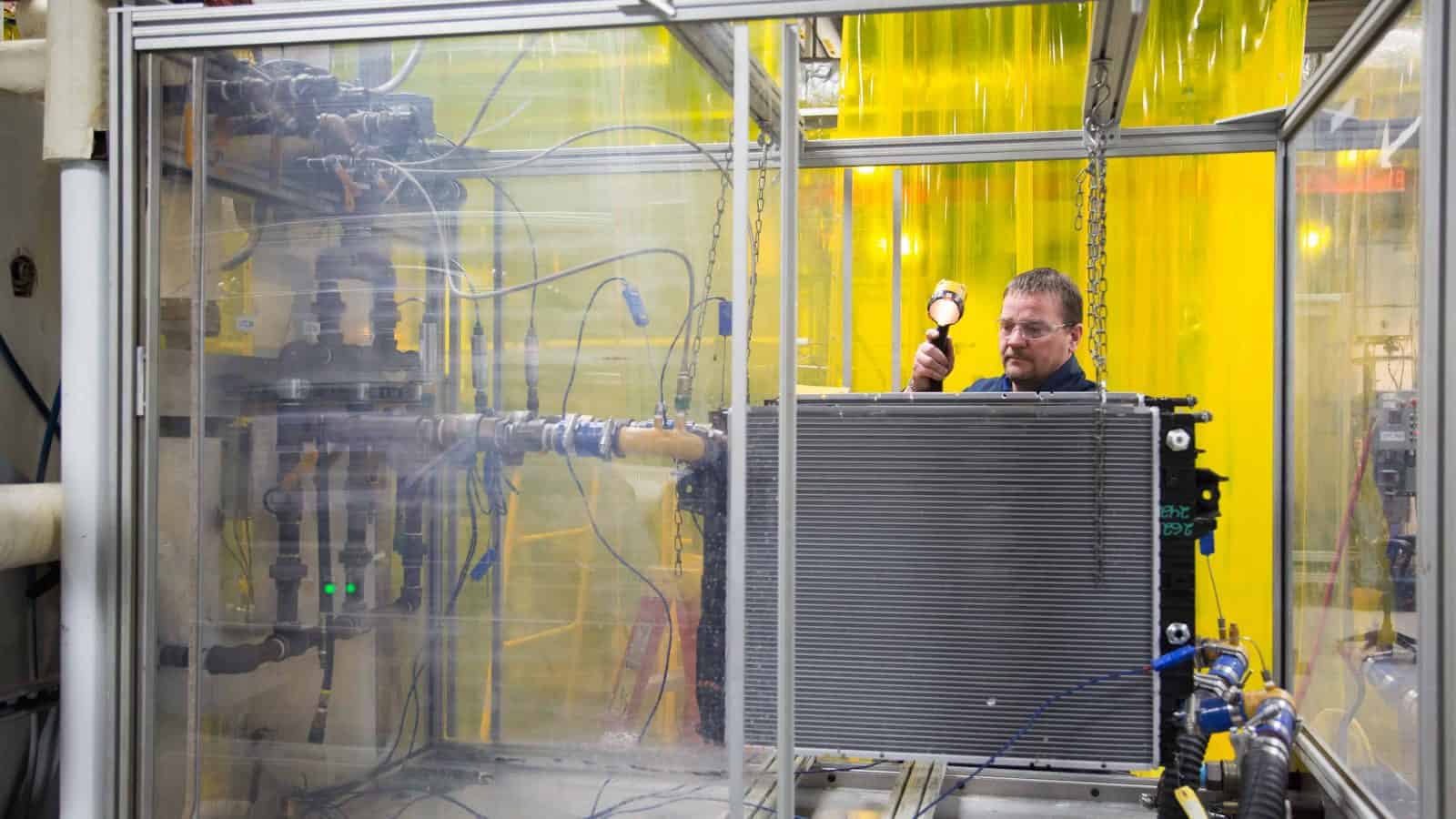Oil-Field-Service Firms Get into Renewables

Companies that provide services and goods to the oil and gas sector are repurposing some of their machinery for use in renewable energy technologies, according to The Wall Street Journal (subscription).
What’s going on: With investment in renewable energy sources expected to reach $1.74 trillion this year, oil-field-service firms including Baker Hughes are diversifying their portfolios to include investment in new energy segments.
- “Baker Hughes said orders in its new energy segment could reach $6 billion to $7 billion by 2030. At the midpoint, that represents about a fifth of the revenue that Wall Street expects it to generate that year.”
- In addition to maintaining its longstanding book of geothermal business, Baker Hughes is now “looking to do carbon capture and sequestration, which … requires geological knowledge” that the firm already has.
Making progress: “Orders in its new energy business were substantial enough to be noted on [the company’s] earnings calls. It booked more than $400 million of orders in the segment last year and said it is on track to exceed that amount this year.”
- Orders comprised carbon capture and sequestration equipment for a large Malaysia project.
- Some of the services can be a source of recurring revenue, as in the case of California direct air capture projects, which are required to monitor carbon dioxide levels underground for 100 years.
Manufacturers Should Act Fast on Energy Tax Credits

Manufacturers risk losing out on several climate and energy tax credits if they don’t act fast—and will miss an opportunity to save millions.
That’s the message from Brian McGoff, president and chief operating officer of Dalrada Corporation—a manufacturing solutions provider focused on sustainability. The Biden administration and Congress have created additional financial incentives for manufacturers that embrace sustainable practices, but these incentives won’t be around forever.
The benefits: Currently, manufacturers can access a wide range of climate and energy-focused tax credits, grants and other benefits, from new programs and funds created through the Inflation Reduction Act to legacy tax credits like the 179D tax deduction—a provision that was expanded recently to offer significantly more value.
- “If you make qualified upgrades or a retrofits to your existing building or facility, the government used to give you a tax credit through 179D that was worth $1.88 per square foot times your tax rate,” said McGoff.
- “Now, it’s $5 per square foot for projects that meet the prevailing wage and apprenticeship requirements. That’s a direct tax credit—so if you define the project, design it, start implementation and have the proper software to demonstrate the required savings, you can apply.”
- “The lifetime cap on the maximum deduction allowed for a property was replaced with a more favorable three-year cap,” he added. “Companies are allowed to elect an alternative deduction for energy-efficient retrofits in the year the retrofitting plan is certified, to reduce the building’s energy usage intensity by at least 25%.”

How it works: The 179D commercial buildings energy-efficiency tax deduction primarily enables building owners to claim a deduction for installing qualifying systems in buildings, says McGoff.
- Taking advantage of ESG-related tax provisions doesn’t only help these companies become more sustainable, he explains. It also helps companies save money on upgrades and other infrastructure projects; cuts down costs over time once their operations become more energy efficient; and makes their property more valuable.
- “I can fix my leaky roof for the third time, or I can invest in more efficient lighting, airflow and structural upgrades for rooftop solar and improve my overall energy efficiency,” said McGoff. “I’m going to spend 10 or 50 percent more to do that, but I’ll get significant returns through these grants, tax deductions and benefits, along with direct savings from increased energy efficiency over time. The alternative is you just keep fixing your roof the same way.”
- A few other useful notes: Tenants may be eligible if they make construction expenditures, and in the case of a system or building installed on federal, state or local government property, the deduction may be taken by the person primarily responsible for the system’s design.
The rush: The current value of these credits and opportunities won’t last forever. Several of these programs, including 179D, will have a reduced value after 2024.
- McGoff cautions that the process for planning projects, vetting qualified technologies and applying for benefits takes months. And while the provisions in the Inflation Reduction Act aren’t set to disappear anytime soon, McGoff also notes that there is no guarantee that legislators won’t reduce or revoke the incentives at some point.
- “We meet with companies eligible for programs that would provide close to $3 billion in value, but more than $1 billion of it goes away in December of next year,” said McGoff. “And there’s so much work and labor that goes into creating the right design, implementation strategy and qualifying for these programs that if they don’t get started now, they’re not going to finish in time.”
The last word: “When I talk to companies about taking advantage of these programs, I tell them, you ought to do it right now, because a large portion of the value in these tax credits is going to be reduced in 18 months,” said McGoff.
Related support: Looking to strengthen your bottom line? The NAM Incentives Locator, powered by Atlas Insight, can help determine your eligibility for a variety of benefits. Learn more here.
After 18 Years, Transmission Line Breaks Ground

A transmission line that was stuck in permitting limbo for 18 years finally broke ground Tuesday, E&E News’ ENERGYWIRE (subscription) reports.
What’s going on: “Interior Secretary Deb Haaland and Energy Secretary Jennifer Granholm traveled to Wyoming for a ceremony to celebrate work on the 732-mile TransWest Express Transmission project. The line will add 3,000 megawatts of transmission capacity, sending electrons from what is set to be the country’s largest onshore wind project in Wyoming across four states for use in California, Arizona and Nevada.”
A milestone: The project—which was initiated by Arizona Public Service Co. in 2005—is a “‘momentous milestone’” that advances the Biden administration’s objective of constructing 25,000 megawatts of renewable, onshore power sources on public land by 2025, Haaland said.
Permitting reform needed: “It’s a milestone that came after nearly two decades of work, a reminder of how long it can take major grid projects to go through the federal permitting process even as the administration says construction is necessary. Granholm said the Biden administration is committed to making sure future transmission lines don’t face the same roadblocks as TransWest Express.”
- Because it crosses public and private land in multiple states, the TransWest Express project required green lights from federal, state and county governments, as well as private approvals.
- Added Granholm, “‘It took way too long to get this permitted.’”
Meeting goals: To meet “projected levels of renewables,” the U.S. will need to expand its high-voltage transmission network by more than 50% in the next 12 years, according to the Department of Energy.
- “The bipartisan infrastructure law of 2021 included $15.5 billion for DOE to spend on transmission infrastructure. The Biden administration has said future studies will identify key corridors where it can exercise backstop authority to sidestep state opposition to new power line routes.”
What’s next: The $3 billion TransWest Express line is expected to begin construction this year and be fully complete by the end of 2028.
Manufacturers Should Act Fast on Energy Tax Credits

Manufacturers risk losing out on several climate and energy tax credits if they don’t act fast—and will miss an opportunity to save millions.
That’s the message from Brian McGoff, president and chief operating officer of Dalrada Corporation—a manufacturing solutions provider focused on sustainability. The Biden administration and Congress have created additional financial incentives for manufacturers that embrace sustainable practices, but these incentives won’t be around forever.
The benefits: Currently, manufacturers can access a wide range of climate and energy-focused tax credits, grants and other benefits, from new programs and funds created through the Inflation Reduction Act to legacy tax credits like the 179D tax deduction—a provision that was expanded recently to offer significantly more value.
- “If you make qualified upgrades or a retrofits to your existing building or facility, the government used to give you a tax credit through 179D that was worth $1.88 per square foot times your tax rate,” said McGoff.
- “Now, it’s $5 per square foot for projects that meet the prevailing wage and apprenticeship requirements. T hat’s a direct tax credit—so if you define the project, design it, start implementation and have the proper software to demonstrate the required savings, you can apply.”
- “The lifetime cap on the maximum deduction allowed for a property was replaced with a more favorable three-year cap,” he added. “Companies are allowed to elect an alternative deduction for energy-efficient retrofits in the year the retrofitting plan is certified, to reduce the building’s energy usage intensity by at least 25%.”
How it works: The 179D commercial buildings energy-efficiency tax deduction primarily enables building owners to claim a deduction for installing qualifying systems in buildings, says McGoff.
Read the full story here.
Could Rail Help Solve the Grid Problem?

The U.S. railway system may be a solution to serious energy problems, according to ENERGYWIRE’s E&E News (subscription).
What’s going on: During extreme weather events, “trains could dispatch batteries across the country, preventing blackouts without expensive new energy infrastructure,” according to a new Department of Energy study cited by the news source.
- The fix would be less expensive than constructing either new transmission infrastructure or standalone battery storage for extreme-weather occurrences, researchers found.
Why it’s important: Approximately two-thirds of the U.S. is at risk of blackouts this summer, the North American Electric Reliability Corporation warned recently.
Power by rail: Just one train could carry enough battery storage to supply 50,000 households with energy for 12 hours, researchers found.
- “The reach of the country’s 140,000-mile rail network also makes it attractive from a grid perspective, since it extends into dense population centers and transmission-congested regions. That reach has already prompted DOE to identify rail rights-of-way as potential hot spots for a transmission buildout.”
However … While mobile battery storage looks promising, it needs further exploration on a larger scale, one source told E&E News.
Energy Department Invests in Battery Manufacturing Plant

The Department of Energy will give an $850 million loan to battery cell developer KORE Power for the construction of a domestic battery manufacturing plant, The Hill reports.
What’s going on: The DOE on Friday announced the conditional loan to build “KOREPlex” in Buckeye, Arizona, as part of a broader strategy to “strengthen the U.S.’s supply chain for batteries for electric vehicles as well as for energy storage,” according to The Hill.
- It’s a milestone in the Biden administration’s objective to make half of all new vehicles sold in the U.S. in 2030 zero-emissions, according to the DOE.
Why it’s important: Once operational, the facility is expected to produce enough battery-cell storage to power more than 28,000 electric vehicles annually, the DOE said.
- The project is slated to create as many as 700 temporary construction jobs and 1,250 permanent operations positions.
U.S. Risks Summer Energy Shortfalls

Two-thirds of the U.S. is at risk of energy shortfalls this summer—and that share is only going to grow “[u]nless reliability and resilience are appropriately prioritized,” the North American Electric Reliability Corporation warned the Senate at a recent hearing, according to CBS Austin.
What’s going on: In most of the country, “there is the potential of running low on resources including electricity,” CBS reports. “The causes include an overwhelmed electric grid, the slowing use of fossil fuels like coal and natural gas to balance the use of the grid and new regulations like a lengthy permitting process that makes developing new energy take too long.”
- The NERC recently released its 2023 Summer Reliability Assessment, in which it details how, in the current push toward greater use of renewables, “the pace of change is overtaking the reliability needs of the [transmission grid] system,” NERC President and CEO James Robb told the Senate Energy and Natural Resources Committee last week.
Why it’s important: “The hearing comes as more and more Americans are expected to rely on electricity, even being rewarded by switching to electric cars,” according to CBS. “‘When electricity is unreliable, the potential consequences are catastrophic, including loss of human life,’ said Sen. Joe Manchin, D-W.Va., the committee chairperson.”
What can be done: NERC suggests a multipronged plan to shore up grid reliability. This includes:
- Better management of the “pace of change” to mix in more renewables and continued use of traditional energy;
- More natural gas infrastructure to make the grid more resilient; and
- Increased investment in energy storage technologies “and/or hydrogen production and delivery systems.”
The last word: “Manufacturers rely on access to reliable and affordable energy to power their operations—so if the grid is unreliable, not only will manufacturers suffer, but American families will suffer, too,” said NAM Vice President of Energy and Resources Policy Brandon Farris.
- “The NAM supports an all-of-the-above energy approach that includes renewables, natural gas, nuclear, clean hydrogen and others, as well as efforts to shore up grid reliability.”
- “We must also continue to work on permitting reform to ensure we can build new energy projects in a timely manner and get them connected to a stable grid.”
The Road Ahead for Fast EV Charging

The U.S. government and automakers are on a mission to supply the nation with better, faster charging for electric vehicles, according to The Wall Street Journal (subscription).
What’s going on: The Biden administration “is trying to spur the buildout of so-called fast chargers that can charge EVs in about 15 to 40 minutes. That’s still slower than a traditional fill-up at a gas station, but faster than the hours-long experience at public chargers … ”
- Across the U.S., labs including the National Renewable Energy Lab are coming up with designs capable of fully charging an EV in under half an hour. Some trucking firms and charger makers have piloted systems capable of charging trucks in 15-20 minutes.
The challenges: There is debate over the best way to get more people into EVs, however: is it faster chargers or more slower chargers installed “where people park … in order to make charging a car a convenient and ubiquitous experience”?
- Most current EV charging takes place at owners’ homes, typically garages or driveways where the cars can “sip” energy for hours. However, “those in multifamily housing have less access to charging.”
- The more commonly used EV charger, called level 2, will charge a battery to about 80% in four to 10 hours.
Faster charger, bigger issues: “Fast chargers require costly utility infrastructure and charging equipment; ultra-rapid charging would be even more expensive. ‘Higher power costs more,’ [Dan Bowermaster, head of electric-vehicle research at the Electric Power Research Institute] says. ‘You get to a point where for these higher power levels you’d need bigger and bigger wire. At some point the wire gets so big that not only it’s heavy, but it can’t readily bend to curve around the charging port.’”
How to solve it: Mechanical assists could lessen the cables’ weight with robotic arms, according to one fast-charging company.
- Another possible fix? A “solid-state battery in which the electrolyte that conducts the electric current is a solid, rather than a liquid as used in most batteries today.”
- Some automakers are switching to 800-volt charging systems over the more common 400-volt ones, “doubling the power that the same current would provide”—but it’s a move that will require “the highest-level charging equipment.”
Stopping the DOE’s Regulatory Onslaught

The Save Our Gas Stoves Act—which is expected to pass the House in the near future, though it has been temporarily blocked due to an argument over the debt ceiling—would prevent the Department of Energy from moving forward with its overly stringent efficiency threshold for gas stoves.
That would be a win for reining in DOE overreach, but work remains in the fight against a regulatory onslaught by the agency. The NAM and its association partners are leading the way.
What’s going on: Since January, the DOE has undertaken an unprecedented slew of regulations aimed at home appliances—and if implemented, these measures would yield little in the way of energy savings for consumers and result in appliances that cost more.
- They would pile on the costs for manufacturers, too—more than $2.5 billion, according to the DOE’s own estimates, in a package of standards that could go into effect as early as 2027.
- “There are currently nine open rules [from the DOE] on appliance products that have very little energy savings for the consumer while they have really significant cost to the industry,” said Association of Home Appliance Manufacturers Vice President of Communications and Marketing Jill Notini, whose organization isurging consumers to call on Congress to support the Save Our Gas Stoves Act.
The background: Under the Energy Policy and Conservation Act, the DOE is required to review appliance-efficiency standards every six years—but it’s not required to tighten them, Notini said, adding that the last time reviews were done for gas cooking appliances, the agency opted against making any changes.
Higher costs for all: These new DOE standards would significantly raise production costs for manufacturers while reducing features, performance and affordability for consumers, according to AHAM calculations based on DOE data.
- Consumers would save just $1.51 a year in energy costs, or 12.5 cents a month.
Too tight: It’s no surprise, then, that the proposed standards are so stringent as to make almost all on-the-market gas ranges noncompliant, Notini said.
- According to the DOE’s own technical analysis, 96% of gas cooking appliances would fail to meet the proposed efficiency threshold.
- The standards would have a significant effect on consumers, too. Redesigned gas stoves would only be able to have a single high-input burner, increasing the amount of time it would take to boil water or cook a meal, Notini said.
Washing machines: Another recently proposed DOE regulation requires that washing machines use almost 25% less water and cooler water temperatures, a restriction that would also hit consumers hard.
- The point-of-purchase price tag for washing machines would increase $150 per washer—while saving consumers just $7.85 a year, according to the DOE.
- Inflation has become a major concern for consumers across income segments, but particularly among low- to middle-income households, which will see the biggest impact from the proposed standard, Notini pointed out.
The last word: “Manufacturers rely on regulatory clarity and certainty. Unfortunately, DOE’s proposals only add to the regulatory onslaught manufacturers are currently facing,” said NAM Director of Energy and Resources Policy Chris Morris.
- “The NAM remains committed to working with all federal agencies, including the DOE, to ensure that rules and regulations are practical and feasible and do not harm manufacturers.”
Stopping the DOE’s Regulatory Onslaught

The Save Our Gas Stoves Act—which is expected to pass the House in the near future, though it has been temporarily blocked due to an argument over the debt ceiling—would prevent the Department of Energy from moving forward with its overly stringent efficiency threshold for gas stoves.
That would be a win for reining in DOE overreach, but work remains in the fight against a regulatory onslaught by the agency. The NAM and its association partners are leading the way.
What’s going on: Since January, the DOE has undertaken an unprecedented slew of regulations aimed at home appliances—and if implemented, these measures would yield little in the way of energy savings for consumers and result in appliances that cost more.
- They would pile on the costs for manufacturers, too—more than $2.5 billion, according to the DOE’s own estimates, in a package of standards that could go into effect as early as 2027.
- “There are currently nine open rules [from the DOE] on appliance products that have very little energy savings for the consumer while they have really significant cost to the industry,” said Association of Home Appliance Manufacturers Vice President of Communications and Marketing Jill Notini, whose organization is urging consumers to call on Congress to support the Save Our Gas Stoves Act.
The background: Under the Energy Policy and Conservation Act, the DOE is required to review appliance-efficiency standards every six years—but it’s not required to tighten them, Notini said, adding that the last time reviews were done for gas cooking appliances, the agency opted against making any changes.
Higher costs for all: These new DOE standards would significantly raise production costs for manufacturers while reducing features, performance and affordability for consumers, according to AHAM calculations based on DOE data.
- Consumers would save just $1.51 a year in energy costs, or 12.5 cents a month.
Too tight: It’s no surprise, then, that the proposed standards are so stringent as to make almost all on-the-market gas ranges noncompliant, Notini said.
- According to the DOE’s own technical analysis, 96% of gas cooking appliances would fail to meet the proposed efficiency threshold.
- The standards would have a significant effect on consumers, too. Redesigned gas stoves would only be able to have a single high-input burner, increasing the amount of time it would take to boil water or cook a meal, Notini said.
Washing machines: Another recently proposed DOE regulation requires that washing machines use almost 25% less water and cooler water temperatures, a restriction that would also hit consumers hard.
- The point-of-purchase price tag for washing machines would increase $150 per washer—while saving consumers just $7.85 a year, according to the DOE.
- Inflation has become a major concern for consumers across income segments, but particularly among low- to middle-income households, which will see the biggest impact from the proposed standard, Notini pointed out.
The last word: “Manufacturers rely on regulatory clarity and certainty. Unfortunately, DOE’s proposals only add to the regulatory onslaught manufacturers are currently facing,” said NAM Director of Energy and Resources Policy Chris Morris.
- “The NAM remains committed to working with all federal agencies, including the DOE, to ensure that rules and regulations are practical and feasible and do not harm manufacturers.”
